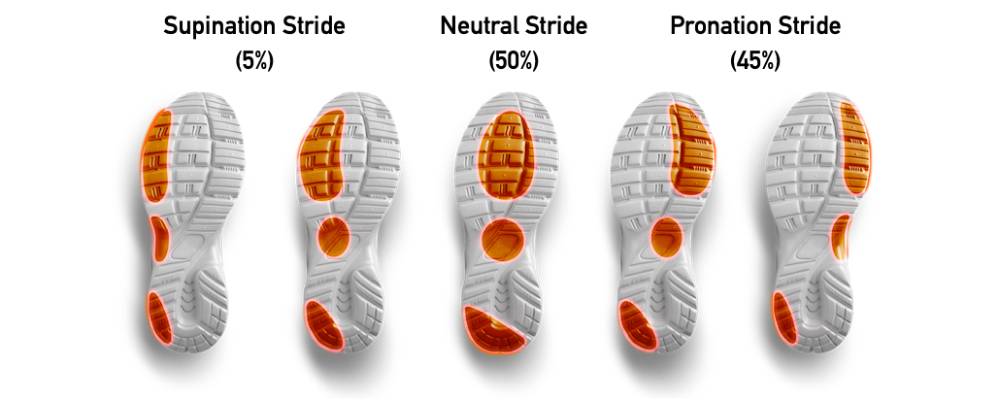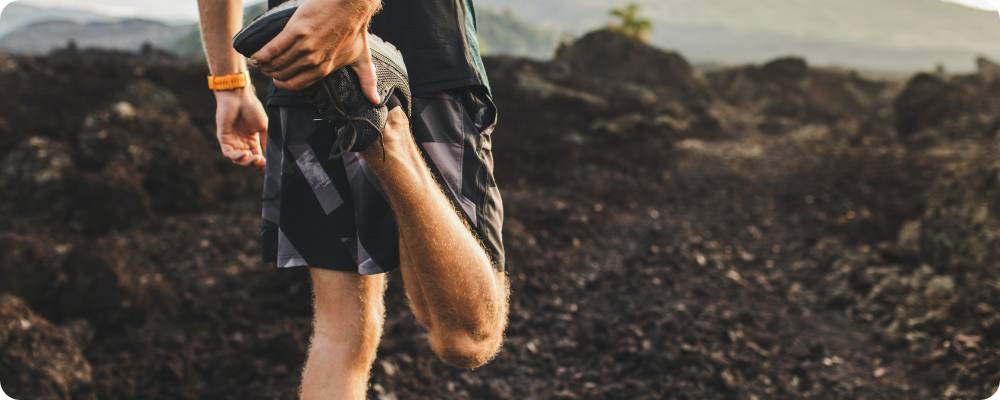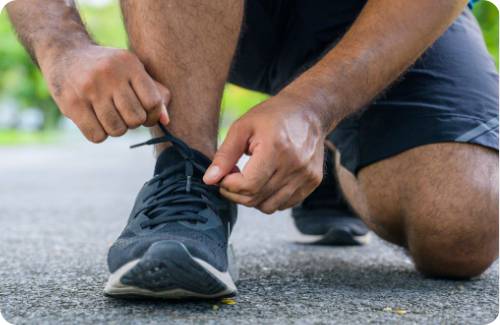How to choose a pair of shoes to start running?
Like thousands of other people, you've decided to take up running. Welcome to the runner’s family! Running is an accessible, economical, and practical sport. You can run whenever and wherever you want: before or after work, during your lunch break, day or night, in the city or in the woods—all you have to do is put on your running shoes, and off you go.
A feeling of well-being, a reduced risk of cardiovascular disease, a boost in self-confidence, stress reduction—when practiced regularly, the benefits are quickly felt in your health, mind, and body.
Then there's the all-important question: How do I choose the right pair of shoes to start running?

It's not always easy to find your way around the many brands and designs on offer. Should you go for an entry-level pair of shoes or invest in a more expensive one right away? It's easy to fall in love with a particular design or color, but inappropriate footwear can lead to pain and injury and may negatively impact your running experience.
Through this article, our experts will guide and advise you in finding your ideal pair of shoes to start running. With their help, you will enjoy your running experience in the best possible way.
1. Your terrain
The type of terrain you're going to run on is very important when choosing your pair of running shoes. Whether you're running in the forest, on a track, or in the city, the ground will be different, and your shoes won't need the same cushioning. A shoe's cushioning is its capacity to absorb the force of an impact.
We can distinguish three different types of terrain: road, trail, and track, each requiring its own footwear. For concrete and asphalt roads that offer no flexibility, you will need to choose shoes that protect your feet and joints from repeated shocks. Be careful, though, as too much cushioning can affect the shoe's stability. We've put together a list of the most important criteria for choosing shoes for the type of ground you will be running on.
- Road: optimal cushioning, greater stability, optimal comfort
- Trail: medium cushionning, good stability, improved foot support
- Running track: low cushioning, good stability, good grip
2. Frequency and distance of your training sessions
The frequency and distance of your training sessions also play a significant role in selecting the right running shoes. For shorter distances, such as 5 km or 10 km, you may prefer lightweight shoes with less cushioning to provide a feeling of speed and responsiveness. However, for longer distances like marathons or ultra-marathons, you’ll need shoes with good stability and thicker cushioning to ensure a comfortable sporting event.
3. What is your kind of stride?
To make the best choice in terms of running shoes, you need to know your stride type. While there's no such thing as a "normal stride", there are certain strides that are more common than others.
There are three of them:
- The universal stride, also known as the neutral stride, is the most common among runners, estimated to be present in 50% of them. In this type of stride, the pressure is evenly distributed over the entire foot.
- The pronation stride, which is the second most common among runners, is observed in 45% of them. If you have a pronation stride, your foot will tend to roll inward while you are running.
- The supination stride, is the least common stride, occurring in only 5% of runners. During the supination stride, the foot tends to roll outward as you run.
With this information, how can you tell whether you have a universal, pronation, or supination stride? Simply look at the wear on your old shoes and refer to the diagram below. Is the wear on the inside, outside, or in the center of your shoe?

If the wear is on:
- the central part, your stride is neutral or universal;
- the inner part, it indicates a pronation stride;
- the outside, you have a supination stride.
Once you've defined your stride type, you can choose shoes that offer the right support and cushioning. Not quite sure? You can contact our customer support to help you determine your stride type.
4. Your size +1 = ideal size
When you engage in sports, your feet can swell with distance. That's why it's a good idea to go one size bigger than your usual shoe size. When you try on a pair of shoes, they should fit snugly, not be too tight, and your heels should be properly supported. Your toes and ankles, on the other hand, should have enough space to move.
This will prevent friction and blisters and help your feet breathe more easily.
Choosing the perfect pair of shoes for you is a crucial step in getting the most out of your sporting activities. Once you put them on, it’s essential to feel comfortable and that the shoes are well-adapted to your feet. The aim is to find a model that provides the best sensations as you run.
Now, thanks to the points covered in this article, you know how to choose the ideal pair of shoes to start running.
Last but not least: equipment for runners
Congratulations! You've now found the perfect pair of shoes to accompany you on all your training sessions. However, have you thought of everything?
Depending on the season, consider adding the following items to your running gear:
- a T-shirt (with short or long sleeves);
- shorts or tights;
- technical running socks.
Choose breathable, insulating clothing that won't let the cold in while maintaining your body heat.
To help you choose your running gear, find out more about the technical products our experts have selected for you.
By following our advices and staying informed, you'll be well-equipped to embark on your running journey with confidence and enthusiasm. Happy running!
YOU MIGHT ALSO LIKE...
How to take care of your running shoes?
Receiving a new pair of running shoes is always exciting. Since buying good running shoes can be expensive, proper care is necessary to avoid premature replacement and better for the environment.
Through this article, and with our expert tips, you can maintain your running shoes for as long as possible, keeping them clean and comfortable.
Running should be fun. To keep it that way, we've compiled 6 basic rules that show what's important for feeling good in sports and for optimal recovery/preparation.
To integrate running training into your routine, you should listen to your body, respect it, and start with a rhythm that is tailored to you.
What are good shoes for heavy runners?
Choosing the right pair of running shoes can improve your performance and reduce the risk of injury.
Heavy runners should pay particular attention to this weight criterion when choosing their shoes. Indeed, these shoes need to have additional reinforcement and cushioning to reduce the impact on the runner's joints and tendons.




